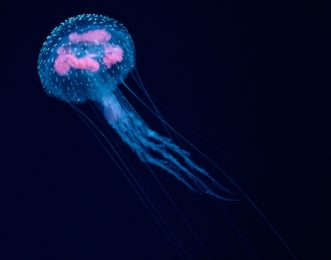
Come to look at the phenomenon of bioluminescence! Bioluminescence is the production and emission of cold light by certain living beings. This product is the consequence of a chemical reaction during which the chemical energy is converted into light energy. No combustion here, only the result of a protein enzyme: luciferase. All these scientific explanations are the results of observations and research that began as early as the fourth century BCE.
The vague knowledge of this phenomenon is attested in certain texts of the Ancients. Aristotle (348-32 BC) is the first to point out the cold light emitted by dead fish. Pliny the Elder (23-79 AD) describes several luminescent organisms in his Historia naturalis: jellyfish or pholades. Other experiences follow; scientists like Boyle (1667), Scheele and Priestley (1767), and Spallanzi (1790) conclude that some animalcules are able to emit light under certain conditions, but they can not yet explain this curious manifestation of nature .
It was not until 1897 that Raphael Dubois discovered that bioluminescence required three compounds: an organic element, luciferin, whose oxidation caused by the control of an enzyme luciferase, led to the production of a luminous chemical energy. Rich in this knowledge, he cultivates photobacteria in water, necessary for their nutrition, and manages to illuminate the basements of the Optic Palace during the Universal Exhibition of Paris in 1900.
This is what offer an alternative to electric lighting. This idea animates the French start-up Glowee who wants to develop a night lighting by the installation of bubbles containing bacteria and components necessary for their survival. This – brilliant – initiative is still in the draft stage, because a light emanating from living organisms is confronted with the short life of the bacteria.


